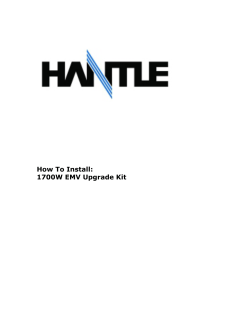
How to Make a Ring with a Bezel‐set stone Featuring artwork from Jewelry Instructor, Faruk Kaiyum and student Sara Johnson
How to Make a Ring with a Bezel‐set stone Featuring artwork from Jewelry Instructor, Faruk Kaiyum and student Sara Johnson with Photos by Larry Merrill, Faruk Kaiyum, and Lindsey Klein How to…the Process Show, is a product of the Creative Workshop of the Memorial Art Gallery of the University of Rochester. Step 1: Project Selection What could the ring look like? To begin with sketches can give you a road map in design and creation. As you work on your drawing, design and idea consider what it will say to those who will see it. Finished ring and design drawings by Sarah Johnson. Step 2: Selection of Materials Consider finger size. What kind of stone will you use? Will it be made out of gold or silver, copper or brass? What is the most cost effective way to make the ring? Step 3: Layout and Cutting of Material Ring creation begins with the cutting of your metal pieces to form the ring shank and bezel setting. The shank is the part of the ring that will go around your finger. The shank is made from a strip of metal the same size as the finger. The metal is first annealed and then wrapped around a ring mandrel to the appropriate size. Step 4: Soldering The ends are filed flat, butted and hard soldered in place in the joint. A solder is a fusible metal alloy with a melting point or melting range. The ring shank is fluxed and heated in a circular fashion into the solder turns fluid across the joint. Step 5: a bezel to hold the stone… The bezel strip is fashioned the same way except that the measurement comes from the circumference of the stone. The bezel is then reshaped around the stone to insure correct fit. One side of the bezel is the flattened and placed on a flat backing plate and soldered with medium solder. After soldering the excess material from around the bezel is cut off. Both pieces are now placed in sulfuric acid to remove any firescale and flux. Step 6: Filing and Sanding At this point all surfaces are filed smooth. Next, these surfaces are sanded with 320, 400 and 600 wet or dry sandpaper. Step 7: Polishing of Components Tripoli polishing medium is used to remove deep scratches. The inside of the ring is then buffed and all surfaces are polished on a soft cotton wheel. The same processes are repeated using first white diamond polish. Then it is rouged, “a mixing of iron oxide with grease that forms bars for easy handling” (pg 13, Penland School of Crafts Book of Jewelry Making, Lark Books, ‐‐). Step 8: Final Assembly The bezel is placed face down on a perforated block. The shank is filed flat then placed on the bezel cup and held in place with “T” pins. The solder is placed on the opposite side of the joint to be soldered, a torch is used. The piece is then placed in cold water and cleaned up in sulfuric acid. Step 9: Stone Setting The stone is set into the bezel, pressed on all 4 adjacent sides to secure. A rockling Bezel pusher is used to roll the bezel around the stone. Lastly, wax is rubbed over the stone and the bezel pusher is used to burnish the top edges of the bezel. Step 10: Admire your finished ring, begin the next one. A Glossary of terms used when making a ring: Anneal‐ to heat and to cool metal for the purpose of softening. Bezel Pusher‐ a tool used to push over the metal bezel securing a stone in place. Bezel Setting‐ the rim or cup which holds a stone in place. Fire Scale‐ a deposit of cupric oxide that grows on the surface of copper‐bearing metals such as silver and gold when heated. Flux‐ a substance used to promote an oxide‐free atmosphere in soldering surfaces to be joined together. Rouge‐ a fine grit block of polishing medium used in the finishing process or “ a mixing of iron oxide with grease that forms bars for easy handling,” according to page 13 of The Penland School of Crafts Book of Jewelry Making (Indianapolis/ New York; Rutledge, 1975.) Solder‐ a metal or metallic ally used when melted to join metallic surfaces. We use three different melting temperatures (hard, medium and easy solder are all available at the counter).
© Copyright 2025





















